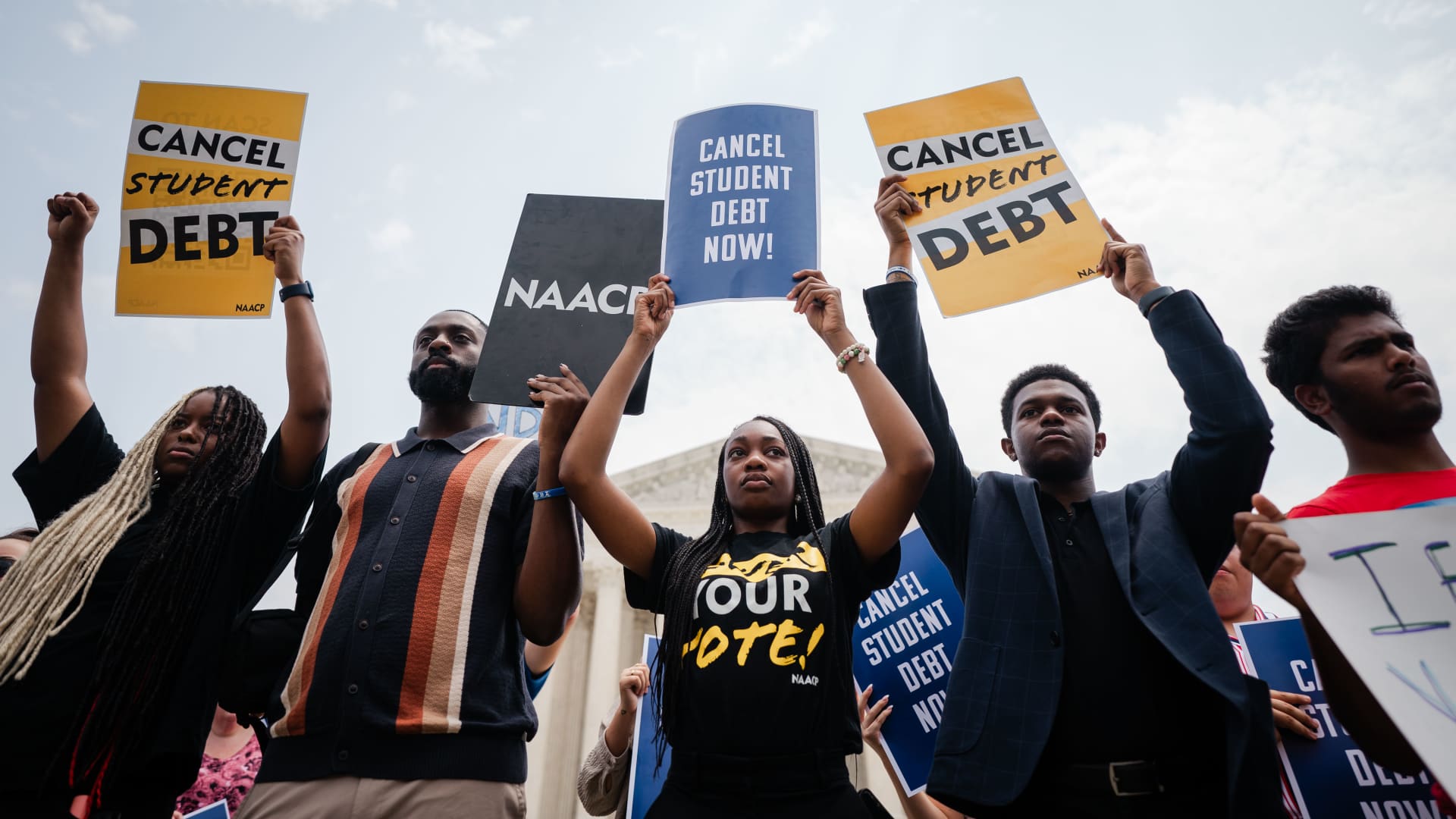Products You May Like
Ryan Moran, a nurse in Jacksonville, Florida, hasn’t thought about his federal student loans in years. But this month, he’s scrambling to figure out how to make room in his budget for his $500 monthly bill.
He and his wife, Amelia, plan to dine out less and to skip the football games they love to attend. His grocery bills will also need to shrink.
“And it’s not only consumption that decreases,” said Moran, 26. “Increasing monthly payments means I have to work overtime, taking time away from my family.”
The pandemic-era pause on federal student loan payments ends Sunday, leaving as many as 40 million Americans on the hook for a new monthly bill they haven’t needed to make in more than three years.
More from Personal Finance:
How federal shutdown may affect Social Security, Medicare
Shutdown may ‘substantially disrupt’ restart of student loan bills
White House wants to remove medical bills from credit reports
Economists caution that the impact on households and the economy remains largely uncertain, as there is little precedent for borrowers getting such a long break from their loan bills. But as the Biden administration ramps up repayment of the more than $1.7 trillion in federal student loan debt, retailers and lenders are bracing for a hit.
American households will get their first bills during an especially volatile period, with the highest interest rates in decades, workers on strike across the country and a looming government shutdown.
“The economy will struggle in the fourth quarter, in meaningful part due to the end of the student loan payment moratorium,” said Mark Zandi, chief economist at Moody’s Analytics.
‘Additional pressure on already strained budgets’
Financial services firm Jefferies is warning that “there could be a significant risk to consumer spending ahead,” because of the resumption of student loan payments. It recently surveyed about 600 consumers with student debt, finding that half of borrowers are “very concerned” about meeting all of their expenses.
Around 70% of borrowers plan to postpone big-ticket purchases come October, its poll found. Meanwhile, many people with student debt plan to cut back their spending on clothing, travel and food.
“As we go into the holiday season, this will be an extra drag on retail spending,” said Brett House, a professor at Columbia Business School.
The Biden administration had hoped to ease the transition back to loan payments by forgiving up to $20,000 in student debt for many borrowers, but the Supreme Court blocked that policy in June.
President Joe Biden is pursuing another path to cancel people’s debt, but it’s expected to be a lengthy process.
Scott Mushkin, founder and CEO of R5 Capital, a consumer research consulting firm, estimates that starting in October, around $7 billion to $8 billion per month will be reallocated to student loan payments.
“It’s definitely a challenge,” Mushkin said, pointing out that retailers that cater to educated consumers are most at risk.
Macy’s CEO Jeff Gennette mentioned student loans in the company’s earnings call in August.
“I think there are some headwinds coming, particularly with student loan[s], that expiration of the loan forgiveness,” Gennette said.
And during Target’s most recent earnings call, CFO Michael Fiddelke said that “the upcoming resumption of student loan repayments will put additional pressure on the already strained budgets of tens of millions of households.”
‘The payment shocks will be significant’
“The payment shocks will be significant” for borrowers and lenders, said Liz Pagel, senior vice president and head of TransUnion’s consumer lending business.
Many student loan borrowers have taken on additional debt during the payment pause, according to a recent study by the credit reporting company. Nearly a third of people with student debt put a balance on a new retail credit card over the last three years, it found. Around 15% took out a personal loan.
“These additional credit products mean additional monthly payments, which may pose added challenges,” Pagel said. The typical student loan bill is around $350 a month, but at least 10% of borrowers have a payment of over $700.
The Consumer Financial Protection Bureau has also found that student loan borrowers have fallen deeper into debt during the pandemic, with more than half of borrowers holding higher monthly debt-related expenses than they did before the pause on bills began in March 2020.
More than 1 in 13 borrowers are currently behind on their other payment obligations, the CFPB says.
“These borrowers might be unable to make payments on their student loans if they are already missing payments on their credit cards or auto loans,” Kentia Elbaum, a spokesperson for the CFPB, said in a previous interview.
— Additional reporting by CNBC’s Melissa Repko.
